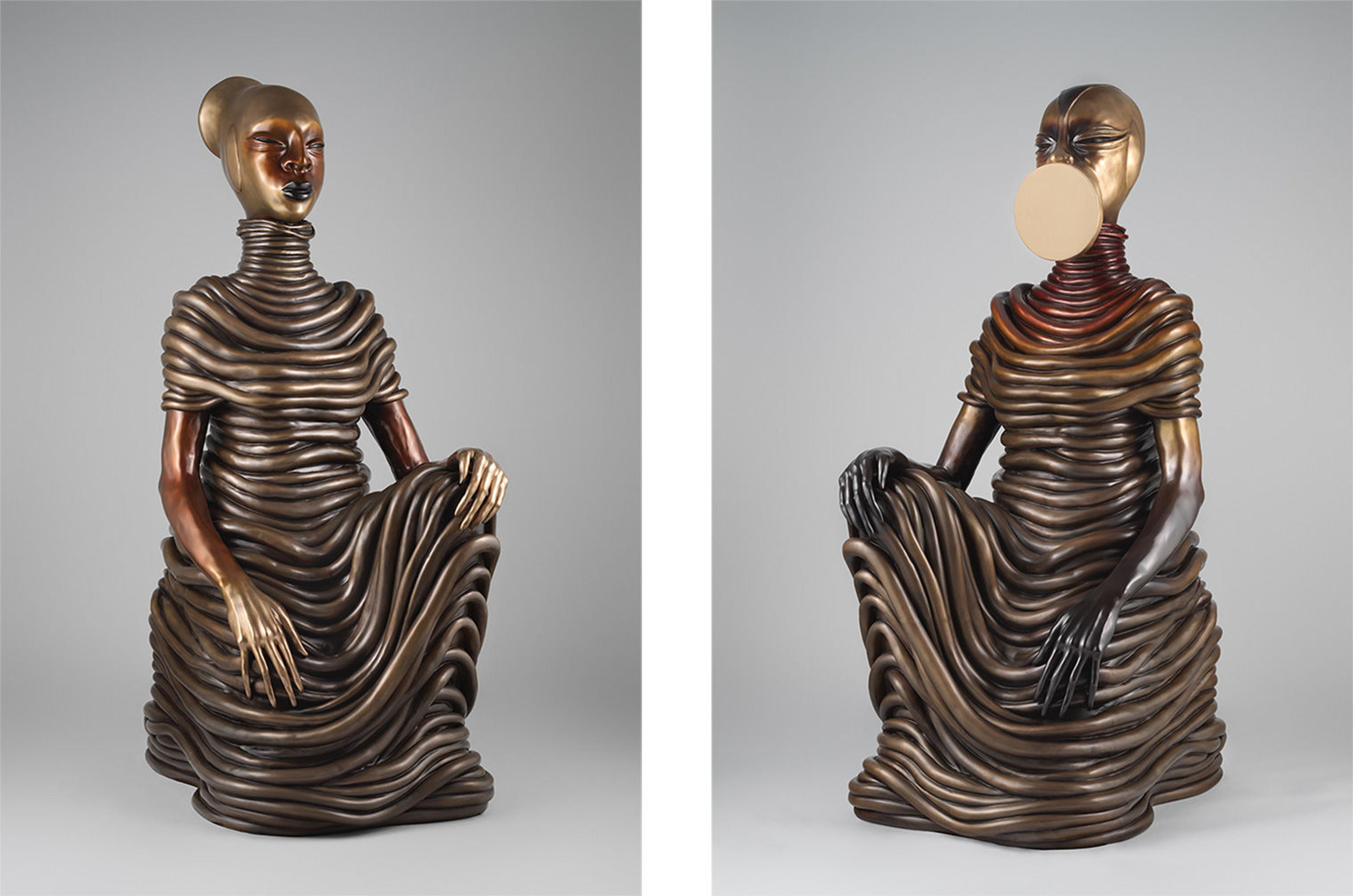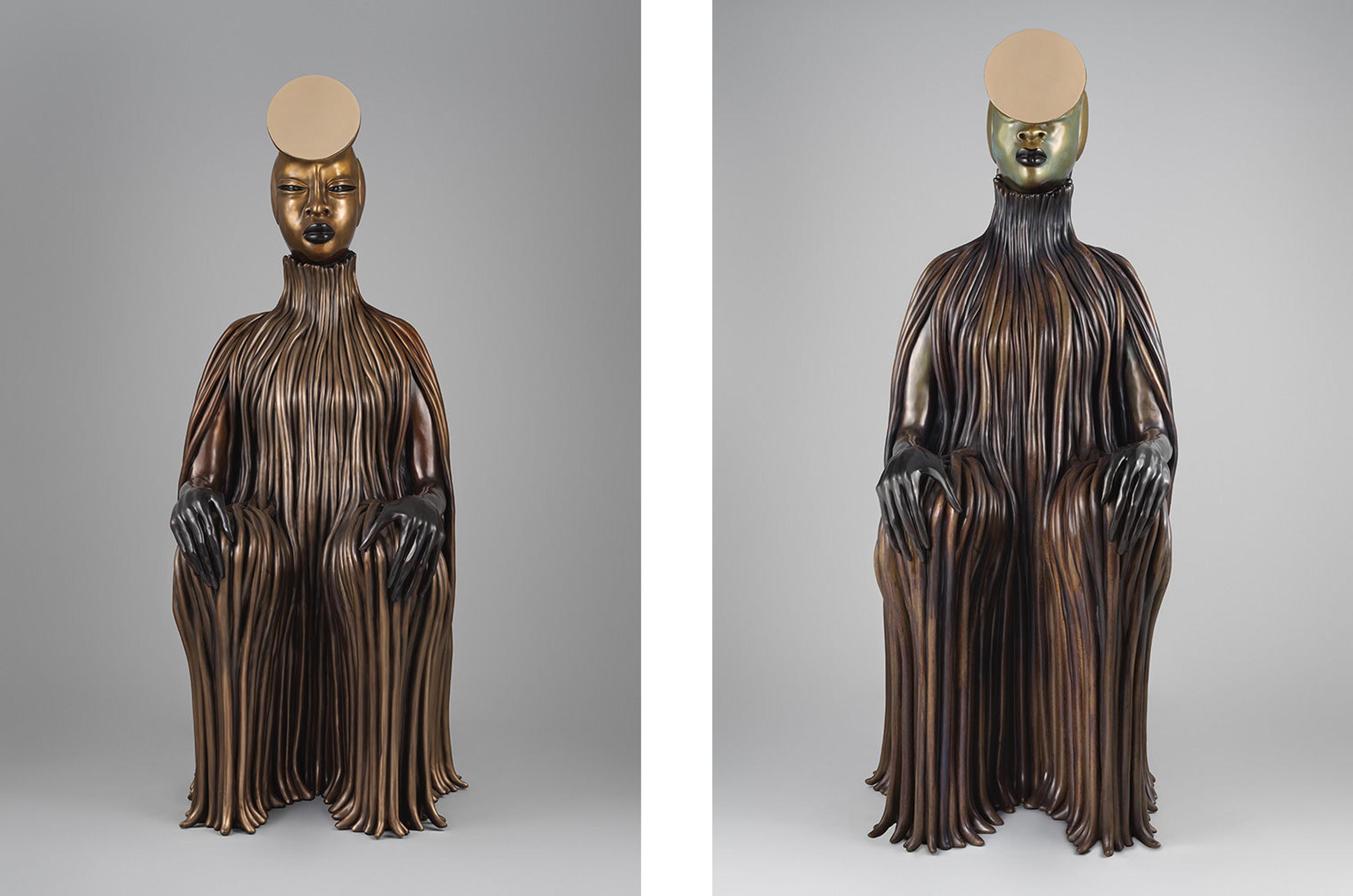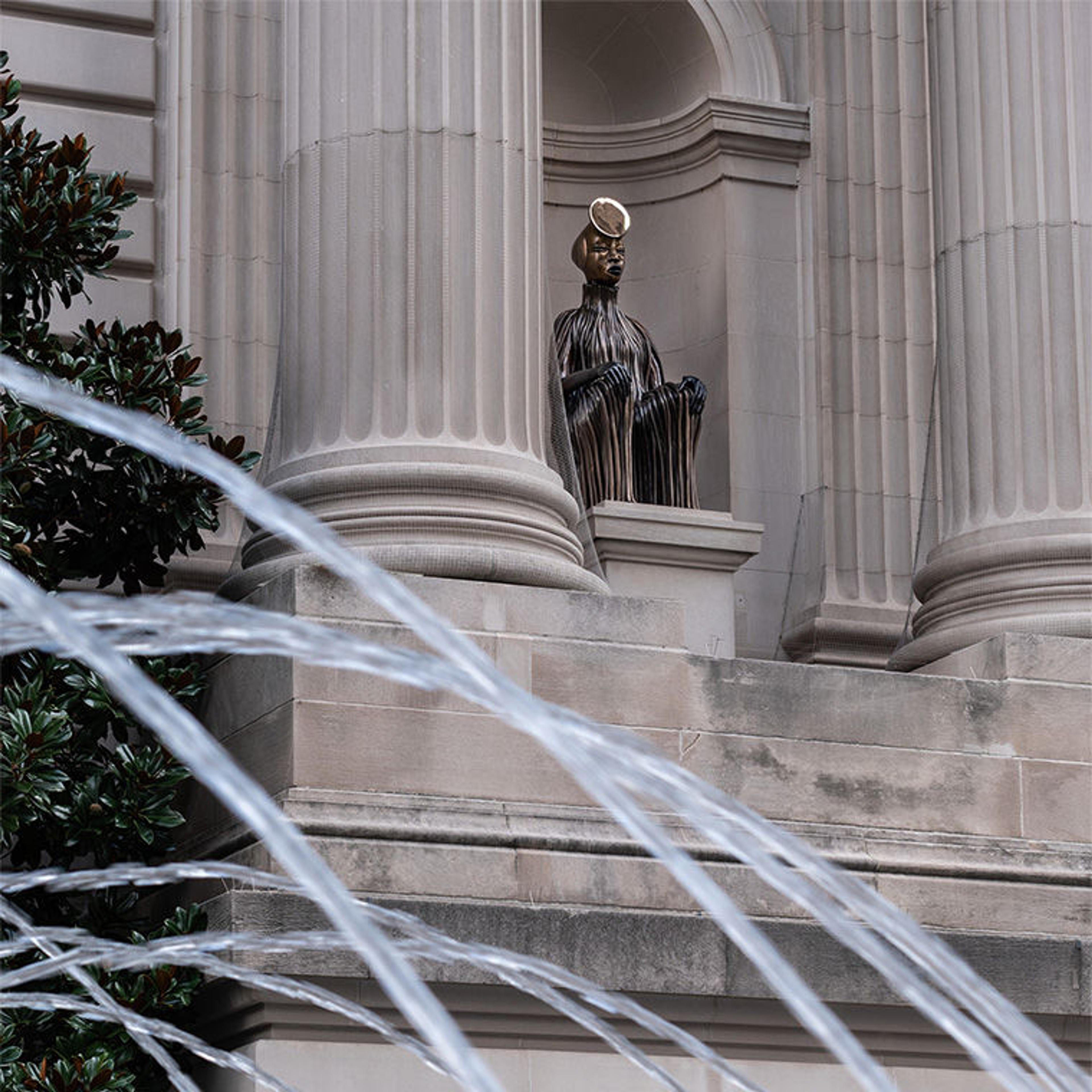Listen to the interview
Wangechi Mutu discusses the inspiration of her seated figures.
Transcript
My name is Wangechi Mutu and I’m an artist. I work in many different media. I’m a painter—I’m known for my collage-paintings—but I’m also a sculptor.
The facade of The Metropolitan is one of the most important facades in New York, let alone the United States, and it is heavily guarded by the people who value the Neoclassic nature of the space.

Left: Wangechi Mutu (Kenyan, born 1972). The Seated I, 2019. Bronze, 79 1/8 x 31 3/4 x 42 1/4 in. (201 x 80.6 x 107.3 cm). Right: Wangechi Mutu (Kenyan, born 1972). The Seated III, 2019. Bronze, 82 1/2 x 35 3/4 x 42 1/2 in. (209.6 x 90.8 x 108 cm)
The idea of asking a contemporary artist to place something in there that is about the issues of today is a statement in and of itself. It’s saying, “Listen, we’re willing to talk about what we’re going through as a culture and as a people. And we’re willing to put you in that position as the bearer of these ideas in the front of this institution.”
These institutions are us—you know, they represent who we are. For me, it’s not only a privilege, it’s also addressing and admitting that yes, we have to change up who we use to represent us as a Museum, as a space that speaks to all of these different people who visit the city.
I went to Catholic school so I love the idea of the classical figure as something that one adores and one is completely taken by and has no idea why. But I also think there is something about the way figures impact us, you know? And if you see yourself represented in that way, you really do feel like, “Okay, this means that I’m allowed to speak on behalf of this place.”

Left: Wangechi Mutu (Kenyan, born 1972). The Seated II, 2019. Bronze, 80 3/4 x 31 3/4 x 37 1/4 in. (205.1 x 80.6 x 94.6 cm). Right: Wangechi Mutu (Kenyan, born 1972). The Seated IV, 2019. Bronze, 80 1/2 x 33 3/8 x 36 3/4 in. (204.5 x 84.8 x 93.3 cm)
So I’ve chosen to stick with the subject of the female body as a platform for what we feel about ourselves as humans. For me, these figures are kind of pushing this belief that women are powerful but releasing them of all the baggage of, “Well, but we’re not sure you can lead us into the future. We’re not sure that you can take us where we haven’t been before.”
— As told to Will Fenstermaker
